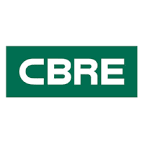Opening Information
-
CSC Internal Safety & Health Inspection
-
Conducted on
-
Prepared by
-
Location
-
Inspection Team:
Inspection Frequency
-
Annual
-
Quarterly
EHS Inspection
1.0 Employer Posting
-
1.1 Is the required OSHA Job Safety and Health Protection Poster displayed in a prominent location where all employees are likely to see it?<br>
-
1.2 Are emergency telephone numbers posted where they can be readily found in case of emergency?<br>
-
1.4 Are signs concerning exit routes, room capacities, floor loading, biohazards, exposures to x-ray, microwave, or other harmful radiation or substances posted where appropriate?<br>
-
1.5 Is the Summary of Work-Related Injuries and Illnesses (OSHA Form 300A) posted during the months of February, March and April?<br>
2.0 Fire Prevention & Protection
-
2.1 If you have a fire alarm system, is it certified as required and tested annually?<br>
-
2.2 If you have interior standpipes and valves, are they inspected regularly?<br>
-
2.3 Are fire doors and shutters in good operating condition?<br>
-
2.4 Is proper clearance maintained below sprinkler heads?<br>
-
2.5 Are portable fire extinguishers provided in adequate number and type and mounted in readily accessible locations?<br>
-
2.6 Are fire extinguishers recharged regularly with this noted on the inspection tag?<br>
-
2.7 Are employees periodically instructed in the use of fire extinguishers and fire protection procedures?<br>
3.0 Personal Protective Equipment and Clothing
-
Does site have documented Personal Protective Equipment Assessment?
-
3.1 Have both the employer and the employees been trained on PPE procedures, i.e., what PPE is necessary for job tasks, when workers need it, and how to properly wear and adjust it?<br><br>
-
3.2 Are adequate work procedures, PPE and other equipment provided and used when cleaning up spilled hazardous materials?<br>
4.0 General Work Environment
-
-
4.1 Are all worksites clean, sanitary and orderly?<br>
-
4.2 Are work surfaces kept dry and appropriate means taken to assure the surfaces are slip-resistant?<br>
-
4.3 Are all spilled hazardous materials or liquids, including blood and other potentially infectious materials, cleaned up immediately and according to proper procedures?<br>
-
4.4 Is combustible scrap, debris and waste stored safely and removed from the worksite promptly?<br>
-
4.5 Are all work areas adequately illuminated?<br>
-
4.6 Are pits and floor openings covered or otherwise guarded?<br>
-
4.7 Have all confined spaces been evaluated for compliance with 29 CFR 1910.146? (Permit required confined spaces.)<br>
5.0 Walkways
-
5.1 Are aisles and passageways kept clear and marked as appropriate?<br>
-
5.2 Are wet surfaces covered with non-slip materials?<br>
-
5.3 Are holes in the floor, sidewalk, or other walking surface repaired properly, covered, or otherwise made safe?<br>
-
5.4 Is there safe clearance for walking in aisles where motorized or mechanical handling equipment is operating?<br>
6.0 Floor and Wall Openings
-
6.1 Are grates or similar type covers over floor openings such as floor drains designed to allow unimpeded foot traffic or rolling equipment?<br>
-
6.2 Are unused portions of service pits and pits not in use either covered or protected by guardrails or equivalent?<br>
7.0 Exiting or Egress-Evacuation
-
Does the site have a documented Emergency Action Plan?
-
7.1 Are all exits marked with an exit sign and illuminated by a reliable light source?<br>
-
7.2 Are the directions to exits, when not immediately apparent, marked with visible signs?<br>
-
7.3 Are doors, passageways or stairways that are neither exits nor access to exits, but could be mistaken for exits, appropriately marked "NOT AN EXIT," "TO BASEMENT," "STOREROOM," etc.?<br>
-
7.4 Are exit signs labeled with the word "EXIT" in lettering at least 5 inches (12.70 centimeters) high and the stroke of the lettering at least l/2inch (1.2700 centimeters) wide?<br>
-
7.5 Are exit doors side-hinged?<br>
-
7.6 Are all exits kept free of obstructions?<br>
8.0 Portable Ladders
-
8.1 Are all ladders maintained in good condition, joints between steps and side rails tight, all hardware and fittings securely attached, and moveable parts operating freely without binding or undue play?<br>
-
8.2 Are non-slip safety feet provided on each metal or rung ladder, and are ladder rungs and steps free of grease and oil?<br>
-
8.3 Are the rungs of ladders uniformly spaced at 12 inches (30.48 centimeters) center to center?<br>
9.0 Hand Tools and Equipment
-
9.1 Are all tools and equipment (both company and employee-owned) used at the workplace in good condition?<br>
-
9.2 Are hand tools, such as chisels, punches, etc., which develop mushroomed heads during use, reconditioned or replaced as necessary?<br>
-
9.3 Are broken or fractured handles on tools and equipment replaced promptly?<br>
-
9.4 Are worn or bent tools replaced?<br>
-
9.5 Are employees aware of hazards caused by faulty or improperly used hand tools?
-
9.6 Are jacks checked periodically to ensure they are in good operating condition?<br>
-
9.7 Are tools stored in a dry, secure location where they cannot be tampered with?<br>
10.0 Portable (Power Operated) Tools and Equipment
-
10.1 Are grinders, saws and similar equipment provided with appropriate safety guards?<br>
-
10.2 Are power tools used with proper shields, guards, or attachments, as recommended by the manufacturer?<br>
-
10.3 Are portable circular saws equipped with guards above and below the base shoe?<br>
-
10.4 Are circular saw guards checked to ensure that they are not wedged up, leaving the lower portion of the blade unguarded?<br>
-
10.5 Are rotating or moving parts of equipment guarded to prevent physical contact?<br>
-
10.6 Are all cord-connected, electrically operated tools and equipment effectively grounded or of the approved double insulated type?<br>
-
10.7 Are effective guards in place over belts, pulleys, chains and sprockets on equipment such as concrete mixers, air compressors, etc.?<br>
-
10.8 Is hoisting equipment available and used for lifting heavy objects, and are hoist ratings and characteristics appropriate for the task?<br>
-
10.9 Are ground-fault circuit interrupters provided on all temporary electrical 15 and 20 ampere circuits used during periods of construction?<br>
-
10.10 Are pneumatic and hydraulic hoses on powder-operated tools checked regularly for deterioration or damage?<br>
11.0 Powdered Hand Tools
-
11.1 Are employees who operate powdered hand tools trained in their use and required to carry a valid operator's card?<br>
-
11.2 Is each powdered hand tool stored in its own locked/designated container when not being used?<br>
-
11.3 Are powdered tools stored in a safe state (unloaded, clean) until they are ready to be used?<br>
-
11.4 Are powdered hand tools inspected for obstructions/defects before use?<br>
-
11.5 Does JHA indicate the use of appropriate PPE such as hard hats, safety goggles, safety shoes and ear protectors? Review at least ONE JHA involving powered hand tool.<br>
12.0 Machine Guarding
-
Does site have a documented Machine Guarding program?
-
12.1 Is there a training program to instruct employees on safe methods of machine operation?<br>
-
12.2 Is there adequate supervision to ensure that employees are following safe machine operating procedures?<br>
-
12.3 Are all emergency stop buttons colored red?<br>
-
12.4 Are fan blades protected with a guard having openings no larger than l/2 inch (1.2700 centimeters) when operating within 7 feet (2.1336 meters) of the floor?<br>
13.0 Lockout/Tagout Procedures
-
Does site have a documented LOTO Program?
-
13.1 Is all machinery or equipment capable of movement required to be de-energized or disengaged and blocked or locked out during cleaning, servicing, adjusting, or setting up operations?<br>
-
13.2 If the power disconnect for equipment does not also disconnect the electrical control circuit, are the appropriate electrical enclosures identified and is a means provided to ensure that the control circuit can also be disconnected and locked out?<br>
-
13.3 Is there a means provided to identify any or all employees who are working on locked-out equipment by their locks or accompanying tags?<br>
14.0 Compressors and Compressed Air
-
14.1 Are compressors equipped with pressure relief valves and pressure gauges?<br>
-
14.2 Are compressor air intakes installed and equipped so as to ensure that only clean, uncontaminated air enters the compressor?<br>
-
14.3 Are air filters installed on the compressor intake?<br>
-
14.4 Are compressors operated and lubricated in accordance with the manufacturer's recommendations?<br>
-
14.5 Are safety devices on compressed air systems checked frequently?<br>
15.0 Hoists, Cranes and Auxiliary Equipment
-
-
15.1 Is each overhead electric hoist equipped with a limit device to stop the hook at its highest and lowest point of safe travel?<br>
-
15.2 Is the rated load of each hoist legibly marked and visible to the operator?<br>
-
15.3 Are stops provided at the safe limits of travel for trolley hoists?
-
15.4 Are the controls of hoists plainly marked to indicate the direction of travel or motion?<br>
16.0 Powered Industrial Trucks (PITs)
-
Does the site have a documented Powered Industrial Truck program?
-
16.1 Are employees properly trained in the use of the type of industrial truck they operate?<br>Review current training roster for classroom and hands-on completion.
-
16.2 Are only trained personnel allowed to operate industrial trucks?<br>
-
16.3 Is substantial overhead protective equipment provided on high lift rider equipment?<br>
-
16.4 Does each industrial truck have a warning horn or other device that can be clearly heard above normal noise in the areas where it is operated?<br>
-
16.5 Are the brakes on each industrial truck capable of bringing the vehicle to a complete and safe stop when fully loaded?<br>
-
16.6 Are industrial trucks that operate where flammable gases, vapors, combustible dust, or ignitable fibers may be present approved for such locations?<br>
-
16.7 Are motorized hand and hand/rider trucks designed so that the brakes are applied and power to the drive motor shuts off when the operator releases his or her grip on the device that controls the truck's travel?<br>
-
16.8 Are industrial trucks with internal combustion engines that are operated in buildings or enclosed areas carefully checked to ensure that such operations do not cause harmful concentrations of dangerous gases or fumes?<br>
17.0 Flammable and Combustible Materials
-
17.1 Are combustible scrap, debris and waste materials (oily rags, etc.) stored in covered metal receptacles and promptly removed from the worksite?<br>
-
17.2 Is proper storage practiced to minimize the risk of fire, including spontaneous combustion?<br>
-
17.3 Are approved containers and tanks used to store and handle flammable and combustible liquids?<br>
-
17.4 Are all connections on drums and combustible liquid piping, vapor and liquid tight?<br>
-
17.5 Are all flammable liquids kept in closed containers when not in use (e.g., parts cleaning tanks, pans, etc.)?<br>
-
17.6 Are appropriate fire extinguishers mounted within 75 feet (22.86 meters) of outside areas containing flammable liquids and within 10 feet (3.048 meters) of any inside storage area for such materials?<br>
18.0 Hazardous Chemical Exposure
-
Does the site have a documented Hazard Communication program?
-
18.1 Are employees aware of the potential hazards and trained in safe handling practices for situations involving various chemicals stored or used in the workplace such as acids, bases, caustics, epoxies, phenols, etc.?<br>
-
18.2 Are eye-wash fountains and safety showers provided in areas where corrosive chemicals are handled?<br>
-
who to contact and what to do in an emergency.
21.0 Electrical
-
Does the site have a documented Electrical SAfety Program?
-
19.1 Do you require compliance with OSHA standards for all contract electrical work?<br>
-
19.2 Are all employees required to report any obvious hazard to life or property in connection with electrical equipment or lines as soon as possible?<br>
-
19.3 Are employees instructed to make preliminary inspections and/or appropriate tests to determine conditions before starting work on electrical equipment or lines?<br>
-
19.4 Are portable electrical tools and equipment grounded or of the double insulated type?<br>
-
19.5 Are electrical appliances such as vacuum cleaners, polishers, vending machines, etc., grounded?<br>
-
19.6 Do extension cords have a grounding conductor?<br>
-
19.7 Are ground-fault circuit interrupters installed on each temporary 15 or 20 ampere, 120 volt alternating current (AC) circuit at locations where construction, demolition, modifications, alterations, or excavations are being performed?<br>
-
19.8 Are flexible cords and cables free of splices or taps?<br>
-
19.9. Are all cord, cable and raceway connections intact and secure?<br>
-
19.10 Are disconnecting means always opened before fuses are replaced?<br>
-
19.11 Are all unused openings (including conduit knockouts) in electrical enclosures and fittings closed with appropriate covers, plugs, or plates?
- Compliant
- Non-Compliant
- N/A
-
Inspect TEN (10) electrical enclosures: Indicate the electrical panel number and location
-
19.12 Are electrical enclosures such as switches, receptacles, junction boxes, etc., provided with tight-fitting covers or plates?<br>
-
19.13 Is low voltage protection provided in the control device of motors driving machines or equipment that could cause injury from inadvertent starting?<br>
-
19.14 Is each motor disconnecting switch or circuit breaker located within sight of the motor control device?<br>
-
19.15 Is the controller for each motor that exceeds two horsepower rated equal to or above the rating of the motor it serves?<br>
-
19.16 Are employees who regularly work on or around energized electrical equipment or lines instructed in cardiopulmonary resuscitation (CPR)?<br>
20.0 Noise
-
Has the site scheduled an initial IH Assessment that includes noise monitoring?
-
Create an Action Item to Schedule an Initial IH Assessment and mark the following Noise questions "Not Applicable".
-
20.1 Are there areas in the workplace where continuous noise levels exceed 85 decibels?<br>
21.0 Fueling and Charging Stations
-
-
21.1 Are fuel tank caps replaced and secured before starting the engine?<br>
-
21.2 Are charging stations designed with bumpers or stop to prevent impacts with lifts? <br>
-
21.3 Are Team Members required to complete training on How to Charge mobile equipment?<br>
-
21.4 Are open lights, open flames, sparking, or arcing equipment prohibited near fueling or transfer of fuel operations?<br>
-
21.5 Are smoking / ignition sources prohibited signs displayed in the vicinity of fueling operations?<br>
22.0 Material Handling and Storage
-
-
22.1 Is there safe clearance for equipment through aisles and doorways?<br>
-
22.2 Are aisleways permanently marked and kept clear to allow unhindered passage?<br>
-
22.3 Are motorized vehicles and mechanized equipment inspected daily or prior to use?<br>
-
22.4 Are vehicles shut off and brakes set prior to loading or unloading?<br>
-
22.5 Are containers of liquid combustibles or flammables, when stacked while being moved, always protected by dunnage (packing material) sufficient to provide stability?<br>
-
22.6 Are dock boards (bridge plates) used when loading or unloading operations are taking place between vehicles and docks?<br>
-
22.7 Are trucks and trailers secured from movement during loading and unloading operations?<br>
-
22.8 Are dock plates and loading ramps constructed and maintained with sufficient strength to support imposed loading?<br>
-
22.9 Are hand trucks maintained in safe operating condition?<br>
-
22.10 Are chutes and gravity roller sections firmly placed or secured to prevent displacement?<br>
-
22.11 Are pallets usually inspected before being loaded or moved?<br>
-
22.12 Are safety latches and other devices being used to prevent slippage of materials off of hoisting hooks?<br>
-
22.13 Are securing chains, ropes, chockers, or slings adequate for the job?<br>
-
22.14 Are SDSs available to employees handling hazardous substances?<br>
23.0 Mobile Equipment & Powered Industrial Trucks (PITs)
-
This section applies to utility vehicles, forklifts, fleet vehicles, etc.
-
23.1 Do team members who operate mobile equipment including PITs have valid operator's licenses?<br>
-
23.2 Are vehicles used to transport employees equipped with lamps, brakes, horns, mirrors, windshields and turn signals, and are they in good repair?<br>
-
23.3 Is a fully charged fire extinguisher, in good condition, with at least a 4 B:C rating maintained in each employee transport vehicle?<br>
24.0 Incident and Injury Management
-
24.1Does the site have a documented Incident Management program?
-
24.2 Does the site have an Occupational Health medical treatment facility identified?
-
24.3 Does the site have a conservative care provider identified?
25.0 Heat Injury and Illness Prevention
-
25.1 Does the site have a documented Heat Injury and Illness Prevention program?
-
25.2 Does the site have a procedure or program for environmental monitoring and the identification of work processes and external factors that increase the likelihood of heat-related injury and illness?
-
25.3 Does the site have procedures for implementing engineering controls and/or administrative controls, including the provisions of drinking water, rest breaks in a cool and/or shaded area, acclimatization?
-
25.4 Does the site have training or protocols for new and returning Team Members, and supervision of Team Members for signs and symptoms of heat-related illness?
26.0 Contractor Safety Management
-
Does the site have a documented Contractor Safety Management program?
-
Are contractors working on site in the AVETTA system?
-
If a contractor is not in the AVETTA system or has a Poor rating, is there a documented Varience process?
-
Contractor Safety Orientation includes a Point of Contact and Emergency procedures?
-
All jobs / projects performed by contractors require a Pre-Job Safety Brief to be completed prior to work. Verify by attaching at least ONE completed Pre-Job Safety Brief.













